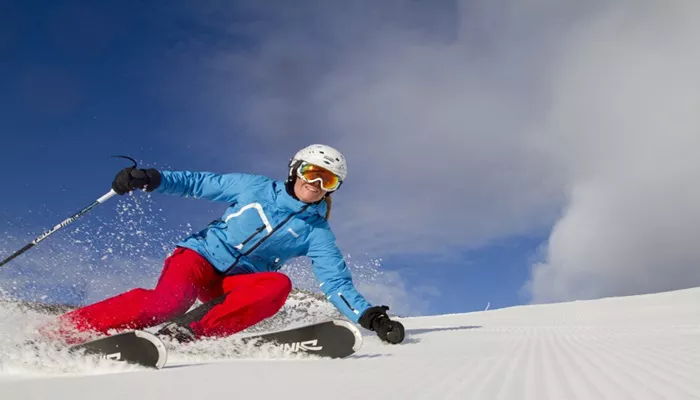Skiing is a thrilling blend of speed, skill, and balance. But for many, controlling skids—especially on steeper or icier terrain—remains a challenge. Skidding not only affects performance but also safety. Whether you’re a beginner struggling with edge control or an intermediate skier trying to carve tighter turns, knowing how to stop skidding is crucial for smoother, safer runs. This guide outlines proven techniques used by professional skiers to prevent skids, focusing on edge grip, body mechanics, equipment tuning, and terrain reading. Let’s explore how to gain full control and ski with confidence.
Understanding Skidding in Skiing
Skidding happens when skis lose edge grip, sliding sideways instead of carving clean turns. It’s common in early learning stages but becomes a liability at higher speeds or on challenging slopes. Recognizing why it occurs is the first step toward correction.
Common Causes of Skidding
- Leaning back on skis
- Over-rotation during turns
- Poor edge engagement
- Skis too flat on the snow
- Speed overpowering control
- Incorrect terrain approach
Risks of Uncontrolled Skidding
- Loss of speed control
- Reduced directional accuracy
- Higher fall risk
- Increased leg fatigue
- Difficulty in icy or narrow trails
How to Stop Skidding When Skiing?
Body Position: Foundation of Stability
Posture influences ski control. A neutral, balanced stance ensures edge grip and fast response to terrain changes.
Keep Centered Over Skis
- Align hips above feet
- Slight forward lean from ankles
- Avoid sitting back on heels
- Flex knees, but don’t crouch
Upper Body Control
- Face chest downhill
- Keep shoulders stable
- Avoid over-rotation
- Arms slightly forward, stable hands
Edge Control Techniques
Skis grip snow using edges. Mastering how and when to apply edge pressure stops lateral sliding.
Use Early Edge Engagement
Initiate the edge before turn entry. This gives the skis time to grip, allowing clean carving without drifting sideways.
Roll Ankles, Not Knees
Tilt skis with ankles for better edge control. Excessive knee angulation leads to instability and over-skidding.
Progressive Edge Pressure
Gradually increase edge pressure throughout the turn. Sudden pressure changes often cause slips and loss of control.
Carving vs. Skidding: Key Differences
Carving leaves clean lines; skidding leaves wide arcs. Understanding the mechanics helps transition toward better control.
Carving Mechanics
- Skis bend and arc
- Clean, narrow tracks in snow
- Body angulation aligns with turn
- Speed is consistent, smoother exits
Skidding Characteristics
- Skis slide rather than cut
- Wide, messy turn shapes
- Snow sprays out during turn
- Unstable exits, inconsistent speed
Terrain Adaptation
Snow conditions impact ski grip. Adjust technique based on surface and slope gradient.
Hardpack and Ice
- Sharpen ski edges regularly
- Engage edge early and firmly
- Shorten turns to reduce slide
- Avoid excessive lean
Powder and Soft Snow
- Use wider skis for float
- Stay balanced, avoid leaning back
- Gentle edge engagement
- Steady speed through turns
Steep Terrain
- Tight, controlled turns
- Downhill ski pressure increases
- Use pole plants for timing
- Keep upper body stable
Turn Shape and Speed Control
Turn shape directly affects grip and speed. Skidding increases with wide or uncontrolled turns.
Round Turns vs. Sharp Pivots
Round turns maintain edge engagement longer, reducing lateral slide. Avoid pivoting skis quickly unless necessary for tight spaces.
Use Speed Strategically
Controlled speed improves reaction time. Enter turns slower to avoid skidding out of control, especially in variable snow.
Using Ski Equipment to Your Advantage
Ski tuning and choice play a crucial role. Poorly maintained gear reduces traction and control.
Sharp Edges Matter
Dull edges cause slipping. Regularly sharpen edges or have them tuned by a shop, especially if skiing on hardpack or ice.
Choose the Right Ski Type
- Carving skis help beginners learn control
- All-mountain skis work across conditions
- Stiff skis provide better grip at high speeds
- Wider skis float better in powder, but may skid more on hard snow
Boot Fit and Binding Settings
- Ensure snug boot fit
- Avoid overly loose bindings
- Boot flex should match skill level
- Forward lean promotes better stance
Exercises to Improve Anti-Skid Technique
On-snow drills develop balance, muscle memory, and edge control.
Edge Hold Drill
Ski across the slope. Apply increasing edge pressure until skis grip firmly. Focus on ankle movement and posture.
Short Radius Turns
Practice short, controlled turns on gentle slopes. Emphasize edge use and body alignment to limit sliding.
Javelin Turns
Lift inside ski tip while turning. Forces balance on the outside ski, enhancing edge awareness and turn dynamics.
Garlands
Start partial turns across slope, then return to fall line. Builds early edge control without full turns.
Instructor Tips for Reducing Skidding
Professional feedback accelerates progress. Lessons focus on correcting posture, edge angles, and movement timing.
Video Analysis
Many instructors use video to reveal posture or rotation errors. Self-awareness aids correction.
Verbal Cues
Simple cues like “press outside ski” or “chin downhill” help skiers adjust on the fly.
Customized Drills
Instructors tailor drills to individual needs. Beginners focus on balance; advanced skiers refine edge angles.
Mental Approach to Control Skidding
Confidence reduces hesitation, which often causes skids. Skiers must trust their skills and equipment.
Stay Calm, Don’t Panic
Tensing up worsens skids. Breathe steadily, stay focused on form.
Visualize Clean Turns
Picture a smooth carve before executing. Visualization improves coordination and focus.
Practice in Safe Zones
Avoid steep or icy slopes during early practice. Build confidence on moderate terrain first.
Conclusion
Stopping skidding while skiing comes down to fundamentals: balance, edge control, equipment, and terrain awareness. Each element plays a role in reducing unwanted slides and gaining smoother, more confident turns. Focus on body positioning, initiate edges early, sharpen your gear, and practice methodically. With time and discipline, even steep icy runs can be carved with precision. Use drills to reinforce skills, seek instructor feedback, and approach skiing with a focused, calm mindset. Mastering these techniques will transform your experience—from frustrating skids to fluent, controlled descents.

